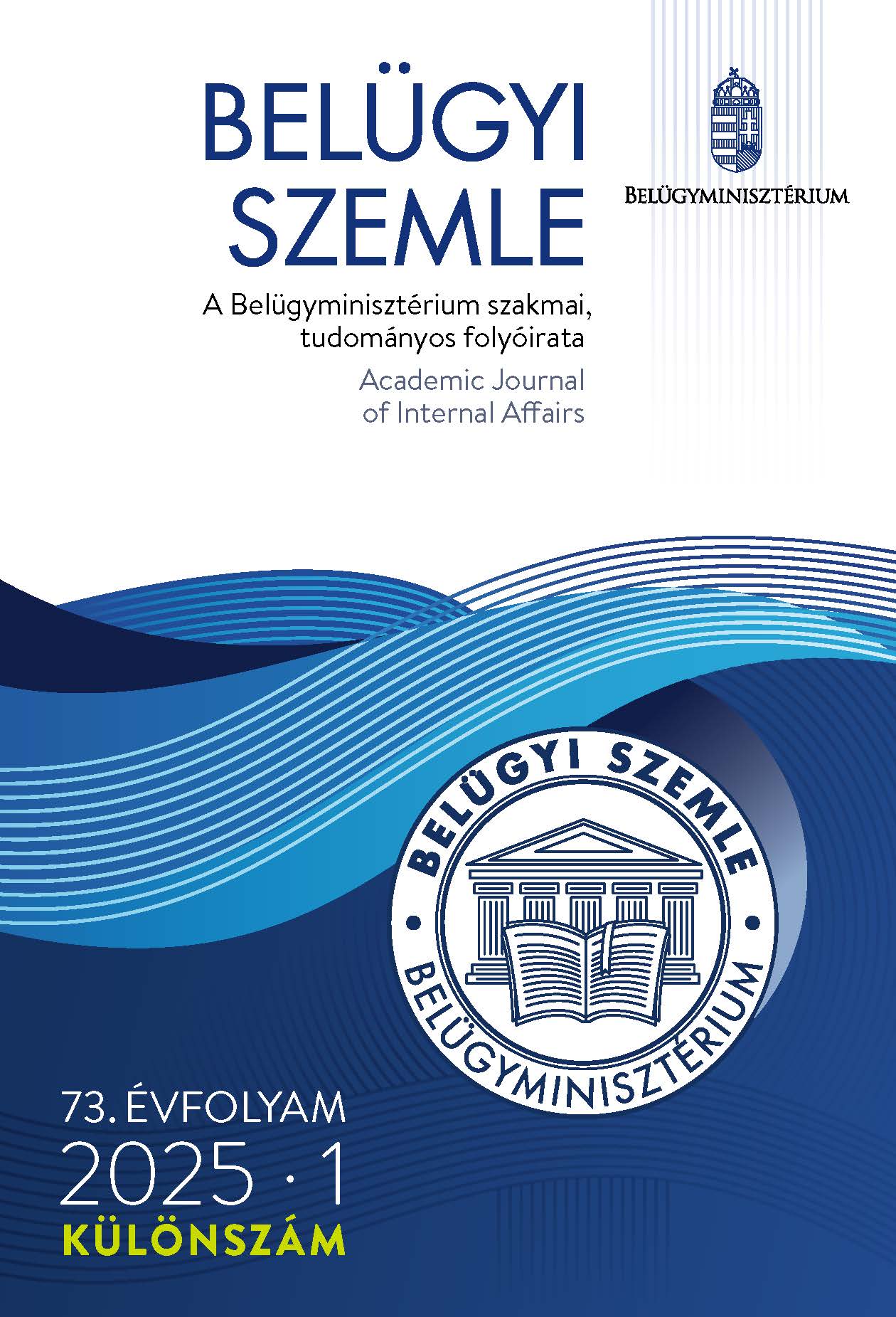Abstract
Aim: By analysing the historical development, legal regulation (or lack of regulation) and criminological characteristics of private investigative activity in Hungary, which is little known to many, we wish to contribute to the comprehensive scientific research and mapping of private security.
Methodology: As a practicing law enforcement professional, we will examine the historical development, legal regulation and criminological characteristics of private investigation in Hungary. The normative regulation and lack of regulation of private investigation, which is difficult to interpret and leaves many questions open, will be examined, and the possibilities of private investigation will be analysed by presenting problems and good practices.
Findings: The study focuses on the theoretical and practical elements of private investigation in Hungary. Giving a glimpse into the everyday life of the pursuit of private investigation, a special and little known activity of many, often shrouded in misconceptions and legends, as a way of creating security as our common mission.
Value: In this day and age, it has become a priority to make an informed and responsible choice about which tasks the police should focus on and which should be handed over to the private security sector. This rightly raises the question of where to strengthen its cooperation with the private security sector in order to ensure the rationalisation of public tasks and more efficient and cost-effective organisational operation. By analysing the theoretical and practical background to private investigation and by highlighting the opportunities and obstacles involved, we aim to provide an interesting stimulus for future researchers interested in this field.
References
Balla Z. (2020). Ockham borotvája és a rendészet. Magyar Rendészet, 23(3), pp. 15–26. https://doi.org/10.32577/mr.2020.3.1
Boda J. (Szerk.) (2019). Rendészettudományi Szaklexikon. Dialóg Campus.
Finszter G. (2009). Közbiztonság és jogállam. Jog, állam, politika, 3, pp. 167–191. https://szakcikkadatbazis.hu/doc/8345370
Kenedli T. (2013). A nemzetbiztonság általános elmélete. Egyetemi jegyzet. Nemzeti Közszolgálati Egyetem, Nemzetbiztonsági Intézet. https://opac.uni-nke.hu/webview?cgimime=application%2Fpdf&infile=&sobj=8964&source=webvd
Mészáros B. (2010). A magánnyomozói tevékenység szabályozásának aktuális kérdései. In Gaál Gy., & Hautzinger Z. (Szerk.), Pécsi Határőr Tudományos Közlemények XI. Tanulmányok a „Quo vadis rendvédelem? Szabadságjogok, társadalmi kötelezettségek és a biztonság” című tudományos konferenciáról (pp. 285–294). Magyar Hadtudományi Társaság Határőr Szakosztály Pécsi Szakcsoport. https://epa.oszk.hu/04500/04581/00011/pdf/EPA04581_pecsi_hataror_2010_285-294.pdf
Mészáros B. (2015). A kriminalisztika és a magánnyomozás kapcsolata. In Gaál Gy., & Hautzinger Z. (Szerk.), Modernkori veszélyek rendészeti aspektusai (pp. 133–135). Magyar Hadtudományi Társaság Határőr Szakosztály Pécsi Szakcsoport. https://www.pecshor.hu/periodika/XVI/meszaros.pdf
Nagy T., & Lukács Zs. (2019). A személyvédelem rendészeti jellemzői és magánbiztonsági szerepe. In Christián L., Major L., & Szabó Cs. (Szerk.), Biztonsági vezetői kézikönyv (pp. 168–169). Ludovika Egyetemi Kiadó. https://real.mtak.hu/117108/1/CL_Biztonsagivezetoikezikonyv.pdf
Nyeste P., & Szendrei F. (2019). Nyílt forrású információszerzés a bűnüldözésben. Nemzetbiztonsági Szemle, 7(2), pp. 50–67. https://doi.org/10.32561/nsz.2019.2.5
Sasvári R. (2008). Szakmai ismeretek. In Szabó L. (Szerk.), Magánnyomozók kézikönyve (pp. 79–81). SzVMSzK.
Sasvári R. (2011). A kriminalisztikai gondolkodásmód. Detektor Plusz, 18(4), pp. 44–47.
Sz. n. (1926). A magándetektív feldicsőítése, mint ügyes reklám. A Rend, 6(4), pp. 4–4.

This work is licensed under a Creative Commons Attribution-NonCommercial-NoDerivatives 4.0 International License.
Copyright (c) 2025 Academic Journal of Internal Affairs
